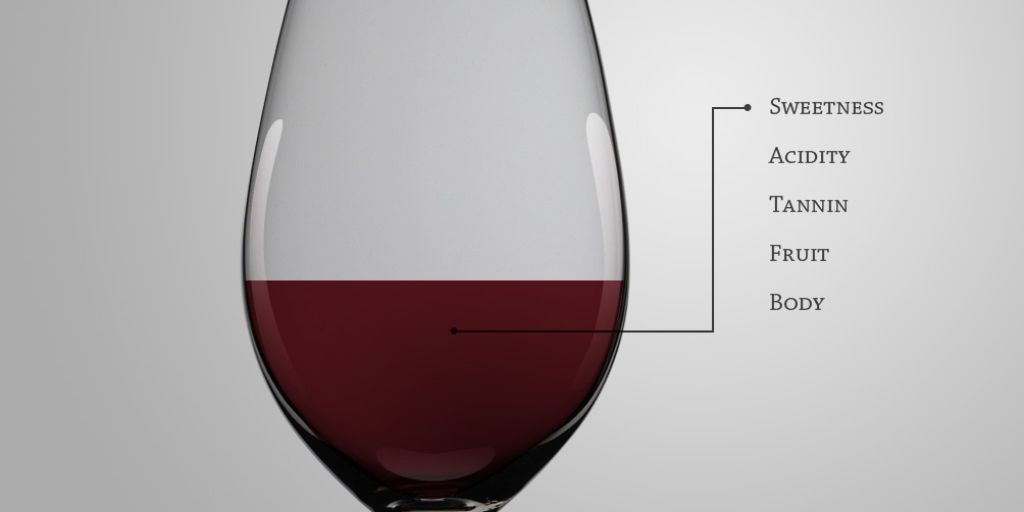Wine is full of complex flavors and sensations, from rich fruit notes to zesty acidity. But one component often misunderstood—and just as vital—is tannin. If you’ve ever taken a sip of red wine and felt a dry, puckering sensation on your tongue or gums, you’ve experienced tannins in action.
Tannins are more than just a taste element—they influence a wine’s structure, age-worthiness, and food pairings. Understanding tannins can elevate your appreciation of wine, help guide your selections, and deepen your sensory experience. So, what exactly are tannins, and why should wine drinkers care?
What Are Tannins?
Tannins are naturally occurring compounds found in plants, seeds, bark, wood, leaves—and importantly, in grape skins, seeds, and stems. In winemaking, tannins primarily come from two sources:
-
Grape-derived tannins: Extracted from the skins, seeds, and stems of the grape.
-
Oak-derived tannins: Imparted during aging in oak barrels.
They belong to a class of compounds called polyphenols and have astringent properties, which is why they create that drying or slightly bitter sensation in your mouth. This texture element is key to how a wine “feels” rather than how it tastes.
Where Tannins Are Most Prominent
Tannins are most commonly associated with red wines, since red wine fermentation includes extended contact with grape skins and seeds, which are rich in tannins. White wines, in contrast, are typically pressed and fermented without the skins, resulting in much lower tannin content.
Some of the most tannin-heavy red wines include:
-
Cabernet Sauvignon
-
Nebbiolo
-
Syrah/Shiraz
-
Malbec
-
Tempranillo
Meanwhile, softer reds like Pinot Noir or Gamay tend to be lower in tannins, offering a smoother, fruitier mouthfeel.
The Role of Tannins in Wine
Tannins play several important roles in wine:
1. Structure and Mouthfeel
Tannins give red wine much of its structure. Just as acidity brings freshness and sweetness brings body, tannins lend firmness and texture. A wine with well-integrated tannins feels balanced and elegant; one with harsh or unripe tannins can seem rough or bitter.
You might hear wine professionals refer to tannins as:
-
Soft or supple (smooth texture, no bitterness)
-
Firm or chewy (noticeable but pleasant structure)
-
Astringent or grippy (more aggressive or drying sensation)
2. Age-Worthiness
Tannins act as natural preservatives, which is one reason why highly tannic wines tend to age well. Over time, tannins polymerize (bind together), causing them to soften and precipitate out, creating a smoother, rounder wine.
Wines like Bordeaux, Barolo, and Brunello di Montalcino are often built to age for decades, largely because of their robust tannin structures.
3. Flavor Balance
While tannins are not technically a flavor, they interact with other elements like fruit, acidity, and oak to create balance. In fruit-forward wines, tannins can help offset the sweetness or richness, creating a more layered experience.
Tannins and Food Pairing
Tannins are particularly important when it comes to pairing wine with food. Because they bind with proteins, tannins can soften and mellow when consumed with protein-rich foods like meat or cheese.
Ideal Pairings for Tannic Wines:
-
Cabernet Sauvignon + Grilled Steak: The protein and fat in the steak help smooth out the wine’s firm tannins.
-
Barolo + Truffle Pasta: Earthy food flavors match the wine’s complexity and tannic backbone.
-
Syrah + Lamb Chops: Rich meats balance the spice and structure of Syrah.
High-tannin wines can clash with lighter dishes or spicy food, emphasizing bitterness or dryness. That’s why low-tannin reds like Pinot Noir or Beaujolais are often more versatile for a range of food pairings.
How to Tell If a Wine Has High Tannins
If you’re tasting wine and trying to identify tannin levels, consider these signs:
-
Dryness in the mouth: A fuzzy or grippy sensation on the tongue and cheeks.
-
Bitterness on the finish: Some tannins, especially from stems or under-ripe grapes, taste bitter.
-
Textural weight: High-tannin wines feel “structured” and linger longer in the mouth.
Compare sipping a Cabernet Sauvignon and a Pinot Noir side by side. You’ll notice how much more drying and grippy the Cabernet is—classic signs of higher tannins.
Tannins vs. Acidity: What’s the Difference?
Wine tannins and acidity are often confused because they both affect the mouthfeel. But they’re quite different:
-
Tannins dry out your mouth.
-
Acidity makes your mouth water.
A well-made red wine will balance both. For example, a Sangiovese (like Chianti) often has moderate tannins and high acidity, making it a bright yet structured food wine.

Reducing Tannin Impact for Sensitive Palates
Some wine drinkers find high-tannin wines too drying or harsh. If you’re tannin-sensitive, here are a few strategies:
-
Choose low-tannin wines: Try Pinot Noir, Barbera, Grenache, or Dolcetto.
-
Chill the wine slightly: Cooler temperatures can soften perception of tannins.
-
Pair with food: Tannins are tamed by proteins and fats, making them easier to enjoy.
-
Let the wine breathe: Aeration through decanting or glass swirling allows tannins to soften.
Alternatively, try wines with more fruit and less oak, since oak aging can amplify tannins and spice.
Tannins in White and Orange Wines
While generally less tannic, white wines can have tannins if aged in oak or produced using skin contact. Orange wines, made from white grapes fermented with their skins like red wines, often have a tannic structure that surprises new drinkers.
Examples:
-
White Rioja or Burgundian Chardonnay (oak-aged whites with some tannin).
-
Skin-contact Albariño or Gewürztraminer (orange wines with grippy texture).
These wines are increasingly popular and offer new ways to experience tannins in non-red formats.
Final Thoughts
Tannins are an essential yet often overlooked part of wine. They influence how a wine feels, how long it can age, how well it pairs with food, and how memorable each sip becomes. Whether you’re new to wine or deepening your understanding, paying attention to tannins can enhance your enjoyment and help you make smarter wine choices.
So the next time you take a sip of a bold red and feel that gentle grip on your tongue, smile—you’ve just shaken hands with tannins.


